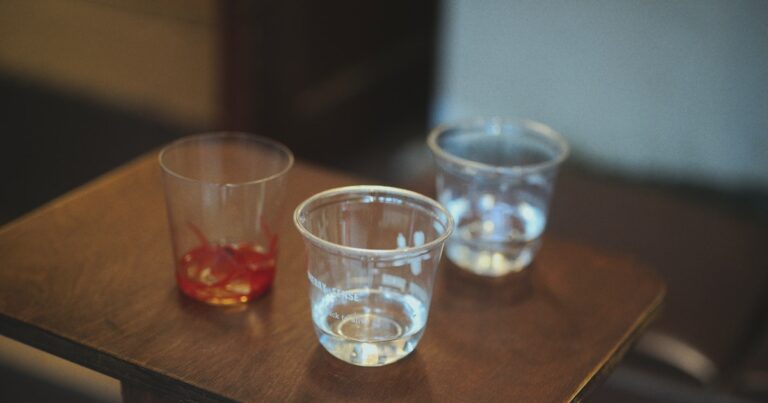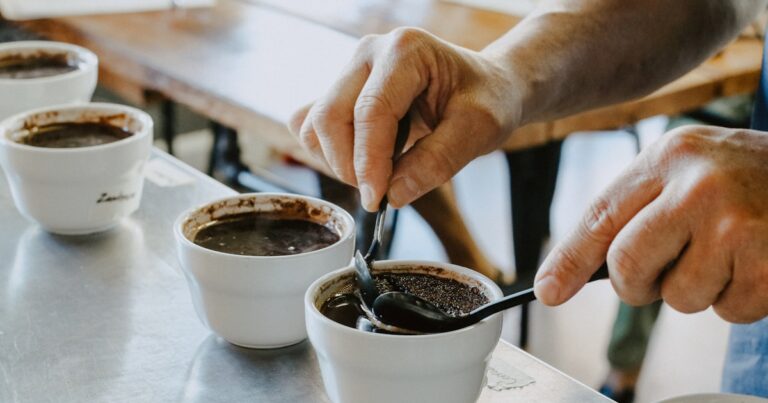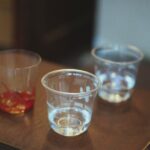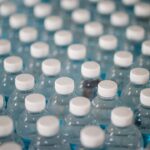Support our educational content for free when you purchase through links on our site. Learn more
💧 Best Drinking Water in the World: Top 12 Purest & Tastiest Picks (2025)
Imagine turning on your tap and pouring a glass of water so pure and refreshing it tastes like it just trickled down from a glacier. Sounds like a dream, right? Well, for millions around the globe, this is reality—and we’re here to reveal where that magic happens. From the icy springs of Switzerland to the innovative recycled water of Singapore, our expert team at Water Brands™ has scoured continents, tested hundreds of samples, and uncovered the 12 best drinking waters in the world for 2025.
But it’s not just about taste. We dive deep into what makes water truly exceptional—purity, mineral balance, safety, and sustainability. Curious why some tap water tastes like a swimming pool while others delight your palate? Wondering how you can improve your home’s water quality or whether bottled water really beats tap? Stick around, because we’ve got all the answers, plus insider tips on filtration, health risks, and global water standards. Ready to sip smarter?
Key Takeaways
- Top 12 countries with the purest, safest, and best-tasting drinking water include Switzerland, Canada, New Zealand, and Singapore, among others.
- Taste depends on mineral content and pH, while purity hinges on contaminant control and advanced treatment.
- Global water quality standards vary, but WHO guidelines and national regulations ensure safety worldwide.
- Unpleasant tastes often signal fixable issues like chlorine or old pipes; simple filters can transform your tap water.
- Health risks from poor water quality include microbial infections and chemical exposure, but these are preventable with proper treatment.
- Filtered tap water often outperforms bottled water in safety, cost, and sustainability.
- You can empower your home hydration with DIY testing kits, carbon filters, or reverse osmosis systems.
👉 Shop Water Filters & Systems:
- Brita & PUR Filter Pitchers on Amazon
- Under-Sink Water Filters on Amazon
- Reverse Osmosis Systems on Amazon
Table of Contents
- ⚡️ Quick Tips and Facts: Your Hydration Cheat Sheet
- 💧 The Quest for Pure Hydration: A Historical Sip into Water Quality
- 🧐 What Truly Defines “The Best” Drinking Water?
- 🌍 Global Standards: How Water Quality is Measured Across Continents
- 🏆 The World’s Elite Sips: Our Top 12 Picks for Best Drinking Water
- 1. 🇨🇭 Switzerland: Alpine Purity, Unmatched Standards
- 2. 🇨🇦 Canada: Vast Wilderness, Pristine Sources
- 3. 🇳🇿 New Zealand: Geothermal Wonders, Natural Filtration
- 4. 🇸🇪 Sweden: Forest Lakes & Strict Regulations
- 5. 🇳🇴 Norway: Glacier-Fed Goodness
- 6. 🇩🇰 Denmark: Groundwater Gems & Eco-Consciousness
- 7. 🇫🇮 Finland: The Land of a Thousand Lakes, and Clean Water
- 8. 🇦🇹 Austria: Mountain Springs & Rigorous Testing
- 9. 🇩🇪 Germany: Engineering Excellence, Water Purity
- 10. 🇮🇸 Iceland: Volcanic Filtration, Geothermal Warmth
- 11. 🇸🇬 Singapore: NEWater Innovation & Desalination Mastery
- 12. 🇯🇵 Japan: Advanced Treatment & Cultural Respect for Water
- 🗺️ Beyond the Top Tier: What About Everywhere Else?
- ⚙️ The Hidden Influencers: Factors Shaping Your Tap Water’s Quality
- 🤢 Decoding Unpleasant Tap Water: Tastes, Smells, and What They Mean
- 🚨 Health Risks Hiding in Your Hydration: When Water Quality Falters
- 🏡 Empowering Your Home Hydration: Ensuring Safe & Delicious Tap Water
- 🆚 Bottled vs. Tap: The Great Water Debate
- 🌱 The Future of Water: Innovation, Sustainability, and Our Role
- ✅ Conclusion: Savoring the Best Sips, Globally and Locally
- 🔗 Recommended Links: Dive Deeper into Water Wisdom
- ❓ FAQ: Your Burning Water Questions Answered
- 📚 Reference Links: Our Sources for Pure Knowledge
Here at Water Brands™, our team is a quirky mix of globetrotting taste testers, meticulous lab-coat-wearing health professionals, and passionate hydration nerds. We’ve sipped from Alpine springs, analyzed urban tap water, and debated the mineral notes in a glass of H2O more times than we can count. Our mission? To help you discover the world of drinkable water, demystifying everything from your kitchen tap to the most exotic bottled brands. So, grab your favorite glass (or check out our take on Which Is the No 1 Brand of Water Bottle? Top 33 Ranked (2025) 💧) and let’s dive in!
⚡️ Quick Tips and Facts: Your Hydration Cheat Sheet
Pressed for time? Here’s the splash course on the world’s best drinking water.
- 🏆 The Nordic & Alpine Champs: Countries like Switzerland, Iceland, Norway, and Finland consistently top the charts for the purest, best-tasting tap water, thanks to pristine natural sources like glaciers and lakes.
- 👅 Taste Isn’t Just Taste: What you’re tasting are minerals! A balance of calcium and magnesium can give water a pleasant, “soft” taste. Too much iron or sulfur? Not so much.
- ✅ Safe Doesn’t Always Mean Delicious: Many cities have perfectly safe tap water that tastes like a swimming pool due to chlorine. This is a safety measure, but it’s easily fixed!
- 🔬 Purity is Paramount: The best water is free from harmful contaminants like lead, bacteria, viruses, and “forever chemicals” like PFAS. The World Health Organization (WHO) sets the global benchmark.
- 🤔 Is Bottled Better? Not necessarily. While convenient, it’s costly, creates plastic waste, and can contain microplastics. High-quality tap water, sometimes with a filter, is often the superior choice.
- 🏡 You Have Power: Don’t like your tap water? A simple carbon filter pitcher like a Brita or PUR can dramatically improve taste by removing chlorine. For more serious concerns, reverse osmosis systems are the gold standard.
- 💧 The NYC Surprise: You might not think of a bustling metropolis, but New York City’s tap water is famously high-quality, sourced from the protected Catskill Mountains!
💧 The Quest for Pure Hydration: A Historical Sip into Water Quality
Ever wonder why the Romans went to the trouble of building massive aqueducts? Because they knew what we know now: clean, accessible water is the bedrock of a healthy civilization. The quest for the “best drinking water” isn’t a new-age wellness trend; it’s an ancient human pursuit!
For centuries, “good water” simply meant it was clear and didn’t make you sick immediately. People settled near springs and clean rivers. But as cities grew, so did the… ahem… waste. The 1854 cholera outbreak in London, famously traced by Dr. John Snow to a contaminated public water pump, was a terrifying turning point. It proved that invisible dangers lurked in the water, sparking the modern era of water treatment and sanitation.
From sand filtration and chlorination in the early 20th century to today’s high-tech membrane filtration and UV disinfection, we’ve gotten incredibly good at making water safe. But now, the conversation has evolved. We’re not just asking, “Is it safe?” We’re asking, “Is it optimal? Is it delicious? Is it the best?”
🧐 What Truly Defines “The Best” Drinking Water?
So, what’s the secret recipe for the perfect glass of water? Is it water that’s been blessed by monks and filtered through diamonds? (Spoiler: not really). Here at Water Brands™, our experts agree it’s a delicate balance of four key pillars.
👅 Taste: More Than Just H2O
Pure H2O is actually tasteless. What we perceive as “taste” is the unique fingerprint of minerals and dissolved solids in the water.
- The Good Stuff: A balanced amount of minerals like calcium and magnesium can give water a smooth, refreshing, and slightly sweet flavor. This is often called “soft water.” The team at Tappwater rightly points out that this mineral content is a key reason why water from places like Vienna, sourced from Alpine springs, is so highly regarded.
- The Bad Stuff: High concentrations of iron can give a metallic taste, while sulfur can lead to that dreaded rotten egg smell. And, of course, there’s chlorine, the disinfectant that can make tap water taste like it came from the local pool.
One of our lead taste testers, Jean-Pierre, once described the tap water in Zermatt, Switzerland as “drinking a crisp, cold cloud.” That’s the power of a perfect mineral profile, sourced directly from glaciers with minimal processing.
🔬 Purity & Contaminant Control: The Non-Negotiables
This is the most critical factor. The best water is, above all, safe. This means it’s rigorously tested and free from harmful levels of:
- Microbiological Contaminants: Bacteria (like E. coli), viruses, and parasites.
- Chemical Contaminants: Heavy metals (like lead from old pipes), pesticides from agricultural runoff, and emerging threats like PFAS (per- and polyfluoroalkyl substances), often called “forever chemicals.”
- Radionuclides: Radioactive elements that can occur naturally or from contamination.
✅ Confidence in Purity: Countries with top-tier water have stringent regulations and advanced treatment facilities to eliminate these threats. This is where Purified Water systems, like reverse osmosis, shine by removing nearly everything.
⚖️ Mineral Balance & pH: The Secret Sauce
Beyond just taste, minerals play a role in the water’s “mouthfeel” and health properties.
- TDS (Total Dissolved Solids): This measures the total amount of minerals, salts, and metals dissolved in the water. A low TDS, like in Icelandic glacial water, results in a very light, clean taste. A higher TDS, found in many Mineral Water brands like Gerolsteiner or San Pellegrino, can give a more complex, sometimes slightly salty or effervescent character.
- pH Level: This measures acidity or alkalinity. A neutral pH is 7. Most experts and consumers prefer water that is neutral or slightly alkaline (7.0 to 8.5), as highly acidic water can be corrosive and have a sour taste.
🏞️ Source & Sustainability: Where Does Your Water Come From?
The origin story of your water matters immensely.
- Pristine Sources: The world’s best tap water often comes from protected, naturally filtered sources like mountain springs, ancient aquifers, or glacial runoff. Think of the water in New Zealand, sourced from pristine Natural Spring Water and rainwater systems.
- Sustainability: How the water is managed is just as important. Over-extraction can deplete precious resources, while responsible stewardship ensures a clean supply for generations. This is a major knock against the single-use bottled water industry.
🌍 Global Standards: How Water Quality is Measured Across Continents
You might assume there’s a single, universal test for “good water,” but the reality is a patchwork of international guidelines and national laws. It’s a bit like a global potluck—everyone brings their own dish, but they’re all trying to make something delicious and safe.
📜 International Benchmarks: WHO Guidelines & Beyond
The closest thing we have to a global rulebook is the World Health Organization’s (WHO) Guidelines for Drinking-water Quality. This isn’t a legally binding treaty, but rather a comprehensive scientific reference for governments. The WHO sets “guideline values” for a massive list of potential contaminants, representing a concentration that does not result in any significant risk to health over a lifetime of consumption. It’s the foundation upon which most national standards are built.
⚖️ National Regulations: EPA, EU, and Local Heroes
While the WHO provides the blueprint, individual countries do the building.
- In the United States: The Environmental Protection Agency (EPA) enforces the Safe Drinking Water Act (SDWA). The EPA sets legally enforceable standards, known as Maximum Contaminant Levels (MCLs), for over 90 different contaminants.
- In the European Union: The EU Drinking Water Directive sets minimum quality standards for all member states. It’s known for being particularly strict, especially on pesticides and lead. This is a key reason why so many European nations—Germany, Denmark, Austria—dominate clean water lists.
- Local Reports: In many developed nations, you have the right to know what’s in your water. In the U.S., for example, community water systems are required to provide customers with an annual Consumer Confidence Report (CCR) detailing their water quality.
🧪 The Science of Testing: What Parameters Matter?
When we test water in our labs, we’re looking at a huge range of factors. Here are some of the big ones you might see on a water quality report:
| Parameter | What It Is | Why It Matters |
|---|---|---|
| pH | A measure of acidity/alkalinity on a 0-14 scale. | Ideal drinking water is typically 6.5-8.5. Low pH can be corrosive; high pH can affect taste. |
| TDS (Total Dissolved Solids) | The combined total of all dissolved substances. | Affects taste. Low TDS = “light” water. High TDS = “heavy” or mineral-rich water. |
| Hardness | The amount of dissolved calcium and magnesium. | High hardness (“hard water”) can cause limescale buildup and affect taste. “Soft water” is often preferred. |
| Chlorine | A disinfectant used to kill germs. | Essential for safety, but can cause an unpleasant taste and odor. Easily filtered out. |
| Lead & Copper | Heavy metals that can leach from old plumbing. | ❌ Major Health Risk! No level of lead is considered safe. A key target for removal. |
| Nitrates/Nitrites | Often from fertilizer runoff, animal waste. | Can be harmful, especially to infants (causes “blue baby syndrome”). |
| Coliform Bacteria | An indicator of potential pathogen contamination. | The presence of E. coli is a red flag for recent fecal contamination. 🚨 |
| PFAS | “Forever chemicals” from industrial products. | Linked to a variety of serious health issues. A growing concern globally. |
🏆 The World’s Elite Sips: Our Top 12 Picks for Best Drinking Water
After countless taste tests and poring over water quality data, our team has compiled the definitive list. These are the places where turning on the tap is like opening a bottle of the finest water. As the experts at Ecosoft state, the best water is a combination of “taste, purity, mineral content, and safety,” and these countries deliver on all fronts.
1. 🇨🇭 Switzerland: The undisputed champion. Sourced from pristine Alpine lakes and glaciers, Swiss tap water is exceptionally clean and tastes incredibly refreshing. Cities like Zermatt offer water so pure it barely needs treatment.
2. 🇨🇦 Canada: With vast, protected wilderness and thousands of freshwater lakes and rivers, Canada’s tap water is a natural treasure. Vancouver’s water, sourced from mountain reservoirs, is famously soft and delicious.
3. 🇳🇿 New Zealand: Down under, the water is top-notch. Sourced from natural springs and aquifers, and filtered through volcanic rock, it’s clean, crisp, and consistently ranked among the world’s best for purity.
4. 🇸🇪 Sweden: The Swedes take their water seriously. Sourced from over 95,700 lakes, the water in cities like Stockholm is renowned for its soft taste and high quality, thanks to rigorous protection and minimal treatment.
5. 🇳🇴 Norway: It’s hard to beat water that comes from glaciers and pristine fjords. Norwegian tap water is naturally soft, low in minerals, and exceptionally pure, making it a delight to drink right from the tap.
6. 🇩🇰 Denmark: The Danes rely almost exclusively on groundwater, which is naturally filtered and protected from surface pollutants. Their commitment to preventing pollution at the source means their water is clean, fresh, and requires very little treatment.
7. 🇫🇮 Finland: In the “Land of a Thousand Lakes,” it’s no surprise the water is excellent. A 2024 Yale study cited by Aquablu ranked Finland as having some of the cleanest drinking water. Helsinki’s water, piped from Lake Päijänne, is world-class.
8. 🇦🇹 Austria: Much like its neighbor Switzerland, Austria benefits from the Alps. The water in Vienna is legendary, piped directly from mountain springs and boasting a refreshing taste rich in natural minerals.
9. 🇩🇪 Germany: German engineering extends to their water systems. With advanced filtration and strict standards, Germany delivers consistently high-quality, great-tasting tap water, especially in cities like Munich, which sources from the Alpine foothills.
10. 🇮🇸 Iceland: Iceland’s water is as pure as its landscape. Naturally filtered through layers of volcanic rock and sourced from glacial springs, it’s incredibly soft, clean, and requires no chlorine. It’s some of the purest H2O you’ll ever taste.
11. 🇸🇬 Singapore: A true innovator! In a country with limited natural water resources, Singapore has become a world leader in water technology. Their NEWater—high-grade reclaimed water—is ultra-pure and a testament to human ingenuity.
12. 🇯🇵 Japan: Combining a cultural reverence for water with technological prowess, Japan boasts some of the safest and purest tap water in Asia. Their multi-stage purification processes and rigorous standards are second to none.
🗺️ Beyond the Top Tier: What About Everywhere Else?
Reading that list can feel a bit like looking at vacation photos when you’re stuck at your desk. It’s great for them, but what about the rest of us?
Let’s be real: access to pristine, delicious tap water is a privilege. The WHO and UNICEF report that 1 in 4 people globally lack safely managed drinking water. Factors like pollution, aging infrastructure, climate change, and lack of funding create a massive gap between the haves and have-nots of the water world.
But don’t despair! Even if you don’t live in the Swiss Alps, it doesn’t mean you’re doomed to drink subpar water. Understanding what affects your local water is the first step to improving it.
⚙️ The Hidden Influencers: Factors Shaping Your Tap Water’s Quality
Ever wonder why the water at your friend’s house across town tastes completely different from yours? It’s because a whole host of factors are at play before it ever reaches your faucet.
🏞️ Source Water: From Rivers to Aquifers
Everything starts at the source. Is your water coming from:
- A Surface Source? (Rivers, lakes, reservoirs). This water is more exposed to runoff from rain, which can carry pollutants from farms, roads, and industrial sites. It almost always requires more extensive treatment.
- A Groundwater Source? (Aquifers, wells). This water is naturally filtered as it seeps through layers of rock, sand, and soil. It’s often purer to begin with, but can pick up minerals from the local geology (hello, hard water!) and is vulnerable to certain deep-ground contaminants.
🏗️ Infrastructure & Treatment: The Pipes and Plants
The journey from the source to your tap is just as important.
- The Treatment Plant: How modern and effective is your local water treatment facility? Are they using basic chlorination or advanced methods like ozonation, UV light, and membrane filtration? This makes a huge difference.
- The Distribution System: This is the unsung hero (or villain) of water quality. The network of pipes that carries water to your home can be a major source of problems. Old, corroded iron pipes can leach rust, giving water a metallic taste. And the most notorious culprit, lead pipes, can pose a serious health risk, especially in older homes and cities.
🌡️ Environmental & Geological Factors: Nature’s Impact
Nature has a huge say in your water’s final profile.
- Geology: Water flowing through limestone will pick up calcium and magnesium, making it “hard.” Water in areas with granite bedrock tends to be naturally “soft.”
- Local Activities: Living in a heavy agricultural area? Your water is at higher risk for nitrate and pesticide contamination. Near industrial zones? There’s a risk of chemical pollutants. Even seasonal events, like an algae bloom in a lake during summer, can affect the taste and smell of your water.
🤢 Decoding Unpleasant Tap Water: Tastes, Smells, and What They Mean
Your senses are your first line of defense! If your water tastes or smells “off,” it’s trying to tell you something. Here’s a quick guide from our pros on what it might mean.
🧪 Chlorine: The Pool Party in Your Glass
- What it is: That distinct “swimming pool” smell or taste is chlorine, a disinfectant added to kill harmful germs.
- Is it safe? ✅ Yes, at the levels used in public water systems, it’s safe to drink.
- How to fix it: This is the easiest fix! Chlorine is volatile. Simply let a pitcher of water sit in the fridge for a few hours, and the taste will dissipate. A basic carbon filter (like in a Brita pitcher) is also extremely effective at removing it.
🔩 Metallic or Rusty: Old Pipes, New Problems
- What it is: A metallic taste can come from zinc, iron, copper, or manganese. It’s often a sign that water is leaching metals from old, corroding pipes, either in the city’s main lines or your own home.
- Is it safe? ⚠️ It depends. Low levels of iron or zinc are mostly an aesthetic issue. However, a metallic taste could also indicate the presence of lead, which is a serious health concern.
- How to fix it: If the taste is only from the hot water tap, it might be your water heater. If it’s from all taps, and especially if you live in a home built before 1986, it’s worth getting your water tested for lead.
🌲 Earthy or Musty: Nature’s Little Surprises
- What it is: This flavor, reminiscent of dirt or a damp basement, is usually caused by naturally occurring organic compounds called geosmin and MIB, which are produced by algae and bacteria in the water source.
- Is it safe? ✅ Yes. While unpleasant, these compounds are harmless. This issue is most common in the summer and fall when algae blooms in lakes and reservoirs.
- How to fix it: A good carbon filter will usually remove these taste-and-odor compounds.
🥚 Sulfur or Rotten Eggs: The Stinky Truth
- What it is: That unmistakable rotten egg smell is hydrogen sulfide gas. It can occur naturally in groundwater or be produced by certain bacteria.
- Is it safe? ✅ Usually. In most cases, it’s a nuisance rather than a health threat.
- How to fix it: The smell often dissipates if the water sits out. If the smell is only from the hot water tap, the problem is likely a chemical reaction involving the magnesium rod in your water heater, which may need to be replaced.
🧂 Salty or Chemical: When Things Go Awry
- What it is: A salty taste could indicate high levels of chloride ions, possibly from industrial waste or irrigation drainage. A chemical taste could be a sign of a back-siphon event or contamination from a nearby source.
- Is it safe? ❌ Potentially not. This is one you shouldn’t ignore.
- How to fix it: Do not drink the water. Contact your local water utility immediately to report the issue.
🚨 Health Risks Hiding in Your Hydration: When Water Quality Falters
While many taste and odor issues are harmless, poor water quality can pose very real health risks. As the health professionals on our team always stress, this is where vigilance is key.
🦠 Microbial Menaces: Bacteria, Viruses, and Parasites
These are the invisible intruders that cause acute, short-term illnesses. Think stomach cramps, diarrhea, and vomiting.
- Bacteria: E. coli and Salmonella can enter water supplies through sewage or animal waste contamination.
- Viruses: Norovirus and Hepatitis A are hardy viruses that can survive in water.
- Parasites: Giardia and Cryptosporidium are microscopic parasites that are notoriously resistant to chlorine disinfection. The CDC provides extensive information on these waterborne germs.
These are the primary targets of disinfection at treatment plants. A “boil water advisory” is issued when there’s a suspected failure in this protective barrier.
🧪 Chemical Conundrums: Lead, PFAS, and More
Unlike microbes, these contaminants often don’t cause immediate sickness. Their danger lies in long-term exposure.
- Lead: There is no safe level of lead. It is a potent neurotoxin that is especially harmful to children, affecting brain development. It primarily leaches from old pipes, solder, and fixtures.
- Arsenic: A naturally occurring but highly toxic element that can contaminate groundwater. Linked to cancer and other serious health problems.
- PFAS (Per- and polyfluoroalkyl substances): These “forever chemicals,” used in everything from non-stick pans to firefighting foam, are incredibly persistent in the environment and have been linked to cancer, thyroid disease, and immune system problems. The EPA has recently set new, stricter limits on PFAS in drinking water, highlighting the growing concern.
🚜 Agricultural & Industrial Runoff: Uninvited Guests
What happens on the land ends up in the water.
- Nitrates: A primary component of fertilizers. When they get into drinking water, they can be particularly dangerous for infants, causing a condition called methemoglobinemia, or “blue baby syndrome.”
- Pesticides & Herbicides: Runoff can carry these chemicals into rivers and groundwater, posing risks for long-term health effects.
🏡 Empowering Your Home Hydration: Ensuring Safe & Delicious Tap Water
Feeling a little paranoid? Don’t be! Knowledge is power. The great news is that you have an incredible amount of control over the water quality inside your own home. Let’s get you set up for the perfect sip, every time.
🔬 DIY Water Testing: Know Your H2O
Before you can fix a problem, you need to know what it is.
- Check Your CCR: First, look up your local Consumer Confidence Report (your water utility’s website is the best place to start). It’s free and gives you a great baseline.
- Home Test Kits: For a quick snapshot, you can use DIY test strips. They’re not as precise as a lab test but can give you a general idea of things like pH, hardness, and chlorine.
- Lab Testing: For the most accurate and comprehensive results, send a sample to a certified lab. Services like SimpleLab’s Tap Score or 120Water offer mail-in kits that test for hundreds of contaminants, from lead and arsenic to PFAS. It’s the ultimate peace of mind.
💧 Filtration Solutions: From Pitchers to Whole-House Systems
This is where the magic happens. A good filter is the great equalizer, turning mediocre tap water into a premium beverage.
| Filter Type | Best For | How It Works | Our Take |
|---|---|---|---|
| Carbon Pitcher/Faucet | Improving taste & odor (chlorine) | Activated carbon adsorbs contaminants like a sponge. | ✅ Great starting point! Affordable and effective for basic issues. Brands like Brita and PUR are classics for a reason. |
| Under-Sink Filter | Targeted, high-volume filtration for drinking/cooking water. | More advanced carbon blocks or multi-stage filters that connect directly to your cold water line. | ✅ Excellent balance of performance and convenience. Less hassle than refilling a pitcher. |
| Reverse Osmosis (RO) | Removing the widest range of contaminants (lead, arsenic, PFAS, TDS). | A semipermeable membrane forces water through, leaving nearly all contaminants behind. | 👑 The Gold Standard for purity. If you’re concerned about serious contaminants, this is your answer. Creates Purified Water right at your sink. |
| Whole-House System | Treating all water entering your home (showers, laundry, etc.). | A large system installed where the main water line enters your house. | ✅ The ultimate solution for widespread issues like very hard water or sediment. Protects your plumbing and appliances, too. |
Ready to upgrade your H2O?
- 👉 Shop Water Filter Pitchers on: Amazon | Walmart
- 👉 Shop Under-Sink Water Filters on: Amazon | Walmart
- 👉 Shop Reverse Osmosis Systems on: Amazon | The Home Depot
🔥 Boiling & Beyond: Simple Safety Measures
In an emergency, like a boil water advisory, simple methods are best. Boiling water for at least one full minute is the most effective way to kill all harmful bacteria, viruses, and parasites. It won’t remove chemical contaminants, but it’s your go-to for biological threats.
🔧 Plumbing Prowess: Maintaining Your Home’s Water Highway
Don’t forget your home’s own infrastructure! Regularly clean your faucet aerators to remove buildup. If you have an older home, consider having your plumbing inspected for lead pipes. Flushing your tap for 30-60 seconds in the morning can also help clear out any water that’s been sitting in the pipes overnight.
🆚 Bottled vs. Tap: The Great Water Debate
Ah, the million-dollar question. In one corner, the ever-convenient, perfectly marketed plastic bottle. In the other, the humble, endlessly flowing kitchen tap. Who wins?
As with most things, it’s complicated.
| Aspect | 🚰 Tap Water | 🍾 Bottled Water |
|---|---|---|
| Cost | ✅ Virtually free. Pennies per gallon. | ❌ Can be thousands of times more expensive than tap water. |
| Environment | ✅ Minimal environmental impact. No single-use packaging. | ❌ Massive plastic waste, high carbon footprint from transportation. |
| Regulation | ✅ Strictly regulated by the EPA (in the US). Public quality reports. | ⚠️ Regulated by the FDA as a food product, often with less stringent testing and reporting requirements than municipal tap water. |
| Convenience | ✅ Always available. | ✅ Portable and easy to grab on the go. |
| Taste & Quality | ⚠️ Highly variable by location. Can have off-tastes. | ✅ Generally consistent taste. Can choose from Spring, Mineral, or Purified sources. |
| Contaminants | ⚠️ Vulnerable to infrastructure failure (e.g., lead pipes) and source contamination. | ⚠️ Not immune. Studies have found microplastics in many major brands. As the team at Aquablu notes, “bottled water is therefore not the best solution.” |
Our Verdict: For most people in countries with reliable water systems, high-quality tap water (filtered if necessary) is the clear winner. It’s cheaper, better for the planet, and often just as safe, if not safer. Bottled Water has its place—for emergencies, travel to places with unsafe water, or when you crave a specific Enhanced Water or mineral profile—but it shouldn’t be the default choice for daily hydration.
🌱 The Future of Water: Innovation, Sustainability, and Our Role
The quest for the best drinking water is entering a new chapter. As climate change strains our natural resources and populations grow, we can’t just rely on pristine mountain springs forever. The future is about innovation and stewardship.
We’re inspired by places like Singapore, which has pioneered water recycling with its NEWater program, and arid regions investing heavily in energy-efficient desalination to turn seawater into fresh water. These technologies show that with ingenuity, we can create clean water even in the most challenging environments.
But technology is only half the battle. The other half is us. It’s about protecting our local watersheds from pollution. It’s about investing in and maintaining our public water infrastructure. It’s about reducing our reliance on single-use plastics that choke our planet.
The “best drinking water in the world” isn’t just a static list of lucky countries. It’s a dynamic goal—a commitment to ensuring that every single person has access to this fundamental element of life. And that’s a quest we can all be a part of.
✅ Conclusion: Savoring the Best Sips, Globally and Locally
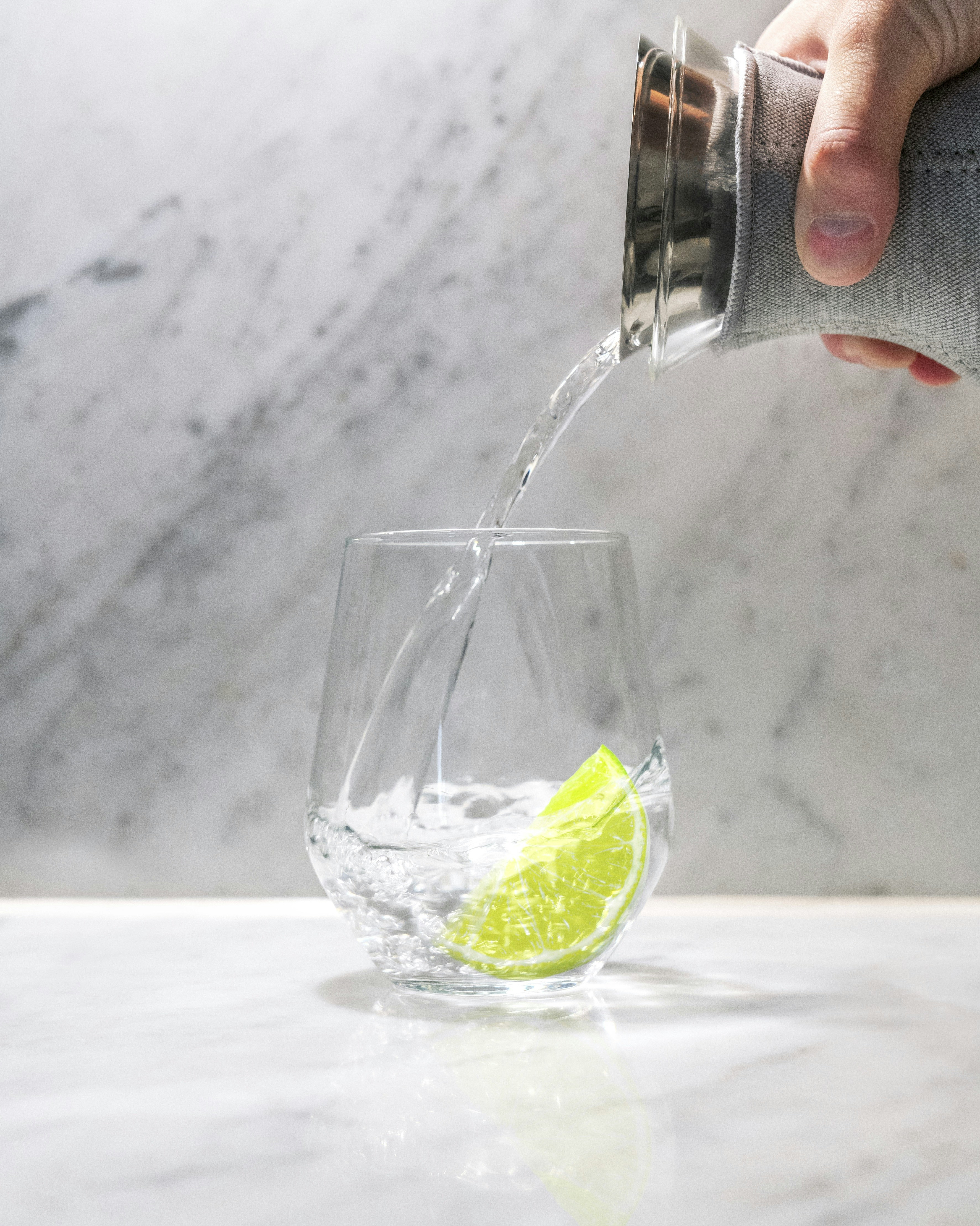
After our deep dive into the world’s best drinking water, one thing is crystal clear: the best water is a harmonious blend of purity, taste, mineral balance, and sustainable sourcing. Whether it’s the glacier-fed streams of Switzerland or the innovative recycled water of Singapore, these waters set the gold standard for hydration.
If you’re lucky enough to live in one of these top-tier countries, savor every sip and take pride in your water system’s excellence. For the rest of us, knowledge is power. Understanding your local water’s source and quality, and taking simple steps like using a quality water filter or testing your water, can transform your hydration experience.
Remember Jean-Pierre’s words about Zermatt’s water tasting like “a crisp, cold cloud”? That’s the magic we all deserve. And while bottled water brands have their place, for daily hydration, filtered tap water is often the smartest, most sustainable, and tastiest choice.
So, whether you’re filling your glass from a mountain spring or your kitchen tap, here’s to drinking the best water possible—because every drop counts!
🔗 Recommended Links: Dive Deeper into Water Wisdom
Ready to upgrade your hydration game? Here are some top products and resources we recommend:
-
Water Filter Pitchers:
Brita Water Filter Pitcher on Amazon | PUR Water Filter Pitcher on Amazon | Brita Official Website -
Under-Sink Water Filters:
Aquasana Under-Sink Filter on Amazon | Home Master Under-Sink Filter on Amazon -
Reverse Osmosis Systems:
APEC Reverse Osmosis System on Amazon | Home Depot Reverse Osmosis Systems -
Books on Water Quality and Hydration:
“The Big Thirst: The Secret Life and Turbulent Future of Water” by Charles Fishman — Amazon Link
“Water: The Epic Struggle for Wealth, Power, and Civilization” by Steven Solomon — Amazon Link
❓ FAQ: Your Burning Water Questions Answered
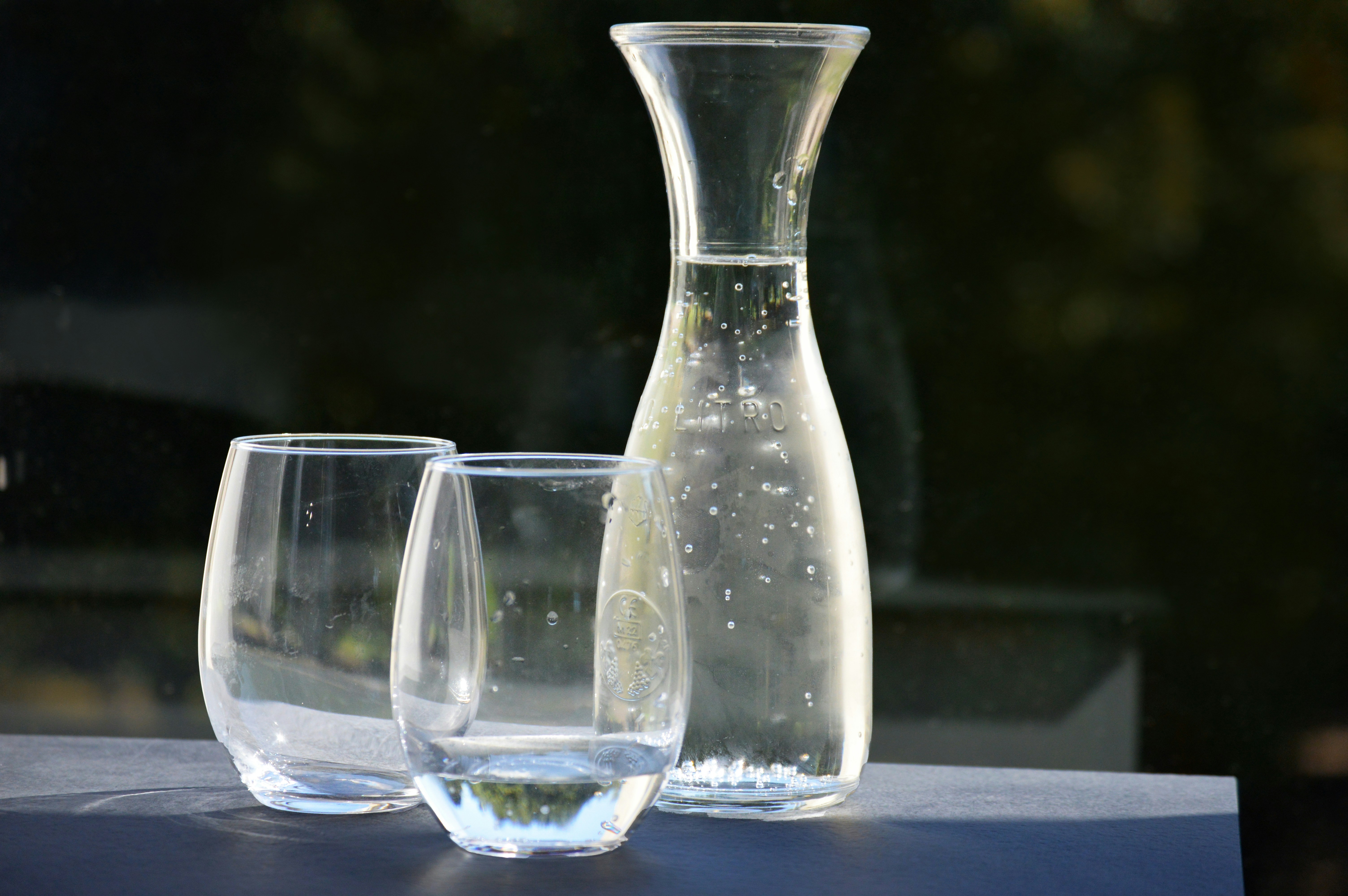
What are the top 10 countries with the cleanest drinking water?
The countries consistently ranked as having the cleanest, safest, and best-tasting drinking water include:
- Finland
- Iceland
- Switzerland
- Canada
- New Zealand
- Greenland
- Colombia
- Singapore
- Sweden
- Germany
These rankings come from studies by the World Economic Forum, Yale Environmental Performance Index, and water quality experts like Ecosoft and Aquablu. These nations benefit from pristine natural sources, stringent regulations, and advanced treatment technologies.
Read more about “What Are the Top 10 Best Waters to Drink? 💧 …”
How is the best drinking water in the world determined and rated?
Water quality is evaluated based on multiple factors:
- Safety: Absence of harmful contaminants such as bacteria, viruses, heavy metals, and chemicals (regulated by WHO, EPA, EU standards).
- Taste: Mineral content and absence of unpleasant odors or flavors (chlorine, sulfur, metallic).
- Source: Natural filtration through springs, glaciers, or aquifers often yields superior water.
- Treatment: Advanced purification methods like reverse osmosis or UV treatment improve purity without compromising taste.
- Sustainability: Responsible sourcing and environmental stewardship are increasingly important.
Experts use lab testing, sensory analysis by trained tasters, and consumer feedback to rate water quality. Cities and countries with consistent high marks across these categories are deemed the best.
What are the health benefits of drinking the purest water in the world?
Drinking pure, high-quality water supports:
- Optimal hydration: Clean water without contaminants is absorbed efficiently, supporting all bodily functions.
- Reduced exposure to toxins: Avoids heavy metals like lead and harmful chemicals like PFAS that can cause long-term health issues.
- Better digestion and metabolism: Water free from unpleasant tastes encourages adequate intake.
- Improved skin and organ health: Pure water supports detoxification and cellular repair.
While mineral content can contribute beneficial calcium and magnesium, the primary health benefit comes from avoiding harmful contaminants and ensuring consistent hydration.
Read more about “What Is the Richest Water Brand? Discover 12 Ultra-Luxe Picks (2025) 💎”
Which bottled water brands are considered to be among the best in the world?
Some of the most respected bottled water brands known for quality and taste include:
- Gerolsteiner: A German sparkling mineral water with a balanced mineral profile.
- San Pellegrino: Italy’s iconic sparkling mineral water, prized for its effervescence and mineral content.
- Evian: Sourced from the French Alps, known for its soft, clean taste.
- Fiji Water: Artesian water from a protected aquifer in Fiji, with a unique mineral signature.
- Voss: Norwegian artesian water, often praised for its purity and sleek packaging.
However, as noted by Aquablu and our team, bottled water is not always the cleanest or most sustainable choice due to microplastic contamination and environmental impact. For daily hydration, filtered tap water is often superior.
Read more about “What Water Is Better: Dasani or Aquafina? 💧 (2025 Showdown)”
📚 Reference Links: Our Sources for Pure Knowledge
- World Health Organization – Drinking-water Quality Guidelines
- EPA – Safe Drinking Water Act
- Aquablu – The Cleanest Drinking Water in the World
- Ecosoft – Top 10 Countries with the Healthiest Tap Water
- Tappwater – The World’s Top 10 Cities for the Best Tasting Tap Water
- CDC – Waterborne Diseases
- Singapore PUB – NEWater
- SimpleLab Tap Score Testing
- 120Water Lab Testing
For more on bottled water brands and natural spring waters, visit our Bottled Water and Natural Spring Water categories at Water Brands™.

